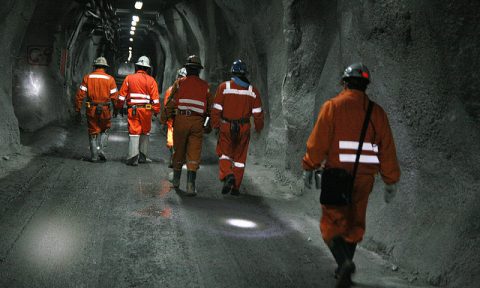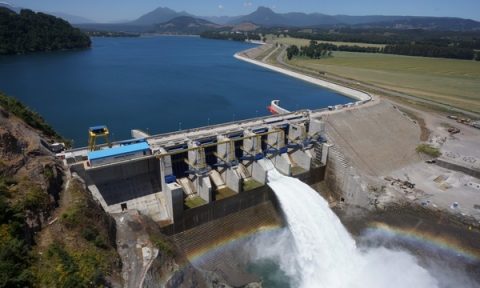The factors that explain the downward bias in the price of copper in 2014
Averaged U.S. $ 3.32 in 2013 and this year is forecast slightly lower. The lower Chinese demand and increased production will influence. In 2015 would rise
JUST six months ago, the price of copper in a threatening teetered on the edge of the psychological barrier of $ 3 per pound. Fears of a slowdown in China and purchases risk aversion generated by the announcement of the withdrawal of monetary stimulus in the U.S. put it at that point, after a relatively comfortable first half. Although both apprehensions surged in the latter part of the year, it is unlikely that in 2014 the share price continues to strengthen, say some experts.
Instead, this year the value of copper itself could fall below the barrier of U.S. $ 3, according to some estimates, and most likely at a lower level close to the average for 2013 of U.S. $ 3.32 per pound (and $ 3.39 per pound at year end). This is in line with what was said a few days ago by the Mining Minister Hernan de Solminihac, who projected a price of between U.S. $ 3 and U.S. $ 3.3 per pound for this exercise.
What is also possible, however, is that in 2015 the market will experience renewed vigor and copper jump an average of $ 4.3 per pound, even above $ 4 recorded in 2011.
As usual, multiple factors will be in play this year throwing for bullish and bearish extremes. The net result will be an average price of U.S. $ 3.17 per pound this year, according to the latest Bloomberg survey on market projections. That forecast has tips upwards of $ 3.63 and only $ 2.7 per pound in the lower bound.
The fact that the expected price is not so different from this year, despite fundamental factors that will limit it to this year, is due to improved outlook for global growth this year. The International Monetary Fund (IMF) estimates that global GDP will expand by 3.6%, after advancing 2.9% in 2013.-
But according to some experts, the bias in the copper price point down. Three weeks ago, the same IMF stated that “tail risks to the metal (12 months) have increased since the probability that the price falls below U.S. $ 2 per pound increased 1.4%, from about 1% in November. “The entity at the same time, estimated the probability that the price increase is considerably lower.
Reasons
After closing on Friday at U.S. $ 3.303 per pound, copper is in backwardation, a condition in which the spot price is lower than the future, indicating that the market is “tight”. At present, this situation occurs for the upper three-month term contracts.
But this tight market will give, and give way to more gaps which in turn, should result in a low price.
Until last September, the copper market was in deficit, with a negative balance of 140 thousand tons of refined, indicate the latest statistics from the International Copper Study Group (ICSG, in English). Global inventories also fell during this period, 98 thousand tons
But “the general consensus is that from next year onwards the market will enter a period of surplus,” says a recent report from ABN AMRO. “An essentially saturated market supply in 2014 and 2015 will limit any significant rise in copper prices,” adds the document.
A perception that will help increase production in mines around the world.
The price of copper will also face other constraints. Lower demand to China scheduled for the second half is one of them, said Colin Fenton, chief economist at JPMorgan commodities in a comment sent to customers in recent weeks.-
Another member shortly commented that will contribute to reduce prices has to do with the secondary market in China.
Last year, when copper flirted with $ 3 per pound, was a shortage of scrap metal in China that began literally paralyze activity foundries.
Although the overall economy slowed, the country’s major foundries such as Jiangxi and Yunnan giants announced they would have to reduce or stop their production due to lack of inputs.
The shortage was that the cathodes are expensive, which was able, at least in part, to revive the quote.
What in last March was paid to a Chinese smelter to refine copper ore amounted to about U.S. $ 60 per ton. In July, that value exceeded U.S. $ 200 per ton and currently stands at around U.S. $ 180 per ton, according to data from Bloomberg.
Fenton, who drew attention to this six months ago, predicts that the situation will relax.
“The copper cathode market is already tight, but we expect bottlenecks from Chinese smelters are going to relax in the second quarter of this year, as China increases capacity,” says Fenton.
Some risks that could further reduce the price is that Chinese growth is less than the range of 7% to 8% estimated in general and that the incipient recovery in the eurozone economy is reversed. Another, in the financial market, investors lose interest in copper as an asset class and withdraw funds, analysts say.-
Events that could underpin a hefty price this year are the materialization of the recent announcement of the China State Reserve, which plans to buy 300,000 tons of copper; better signals in the construction sector in the United States and Europe, a stronger Chinese growth than provided, and a low risk aversion by investors.
In 2015 will be better
According to the most estimates collected by Bloomberg, the price will recover in 2015. The survey gives an average of U.S. $ 3.22 a pound, with peaks of U.S. $ 4.31 and U.S. $ 2.85 per pound.
In general, it is considered that in the second half of this decade the price of copper “rebound strongly, given the strength of demand from emerging markets and the requirement for greater price incentives for the development of new mines,” says a report by Patricia Mohr, from Scotiabank.
The emerging gap should shorten the developed world is enormous. For example, only 81 people had a car in 2012 per thousand people, compared with 794 in the United States, emphasizes Mohr.
“The demand for copper in the long term will remain relatively strong, driven by growth in new areas around the end user,” agrees ABN.
Source: La Tercera












